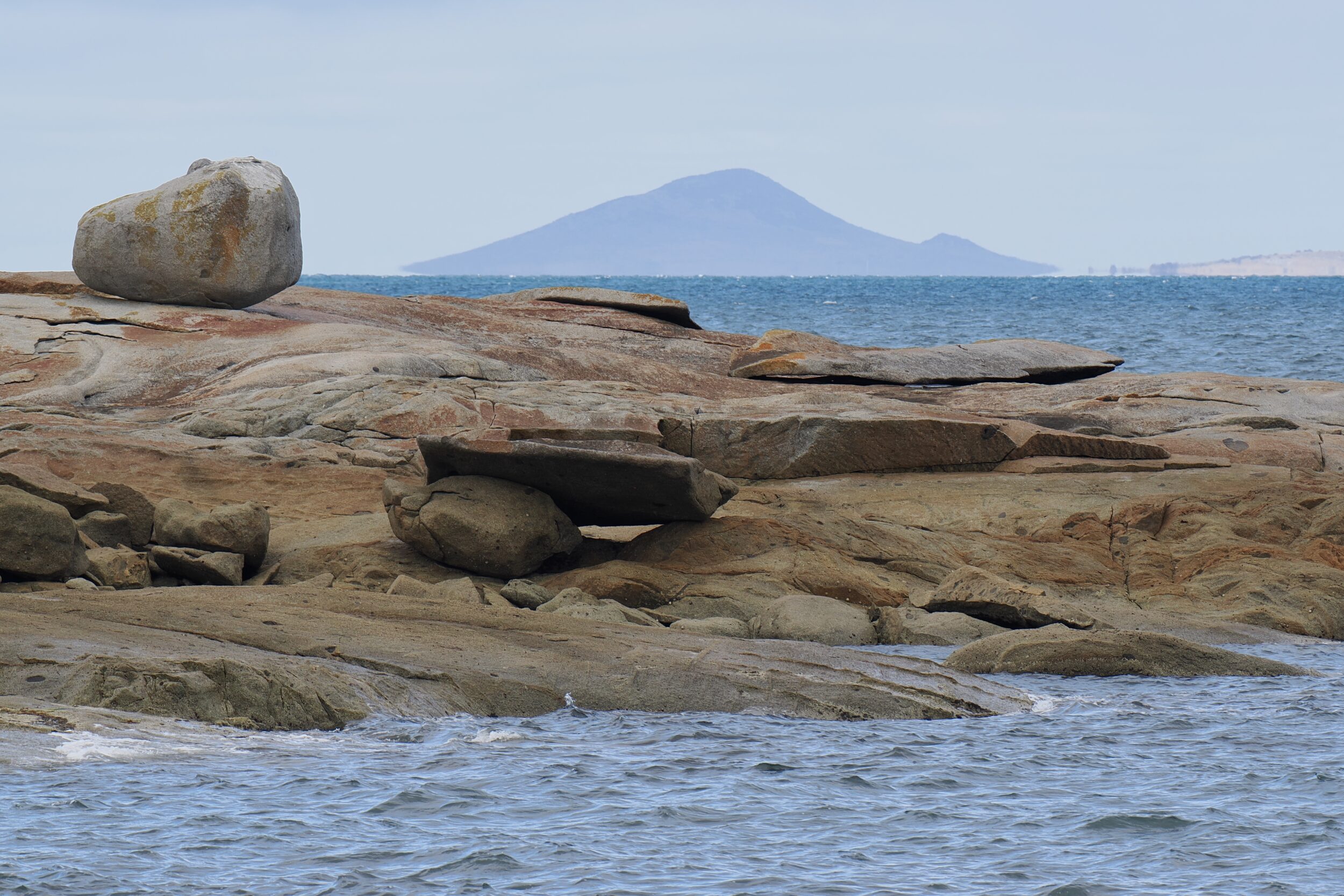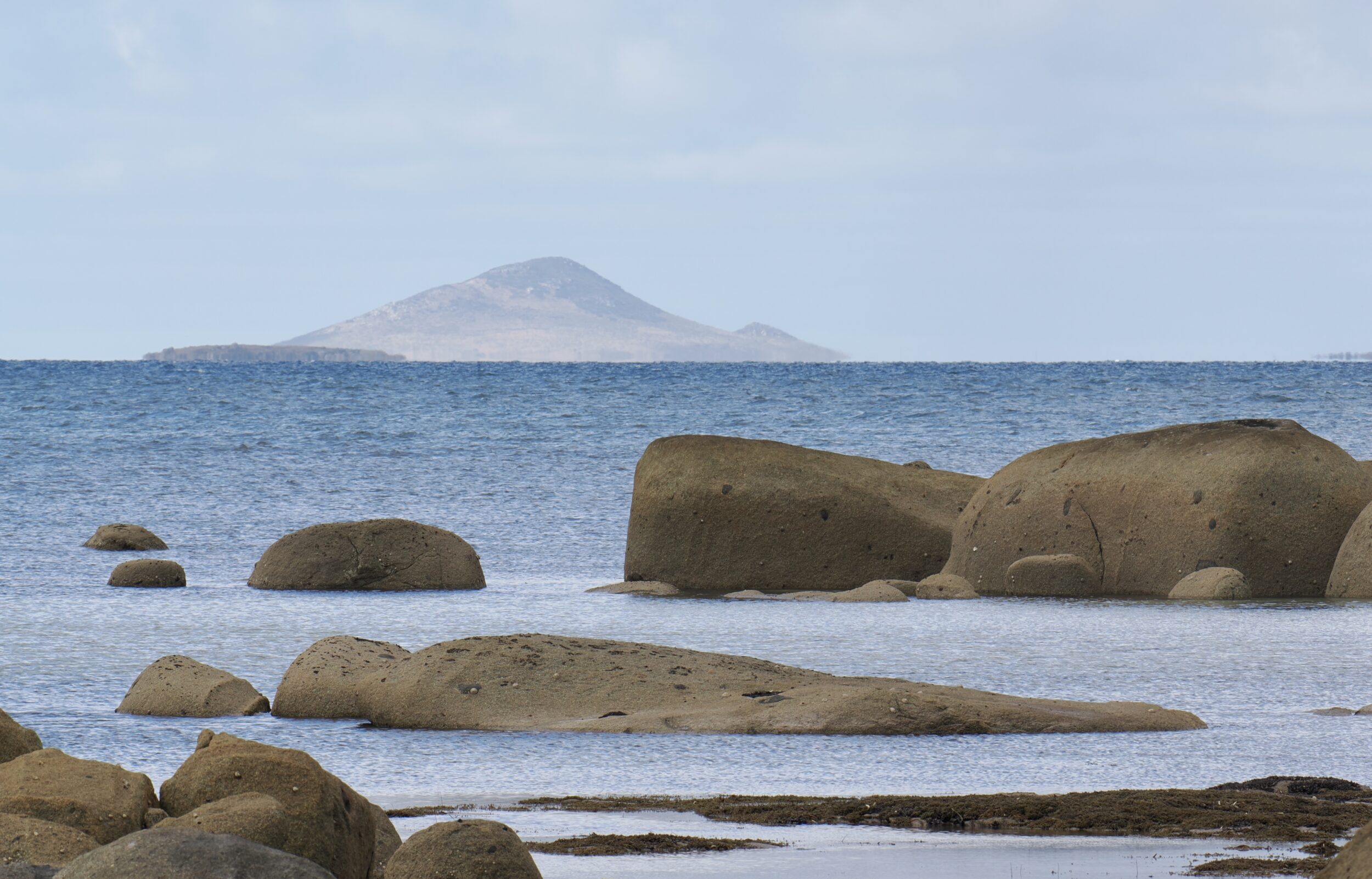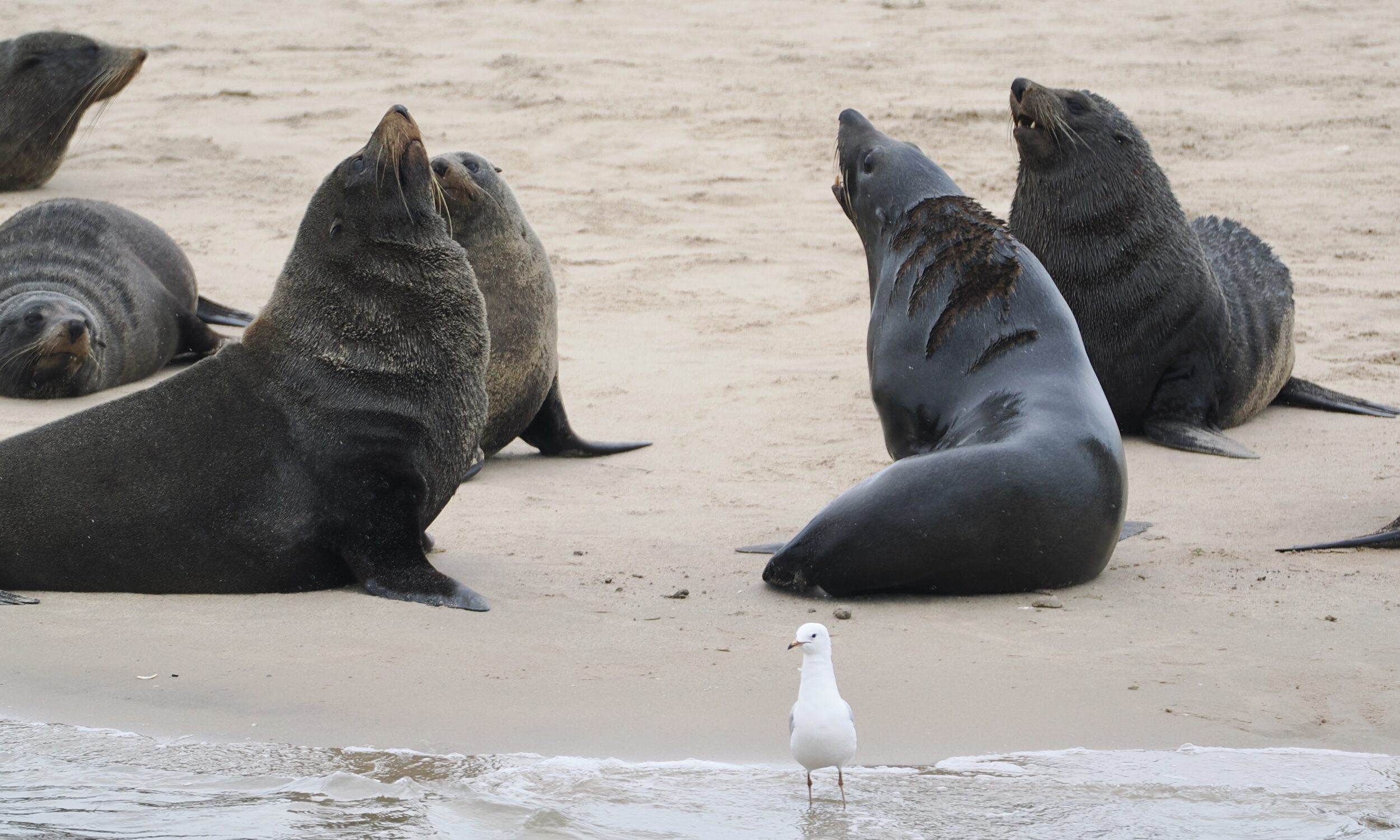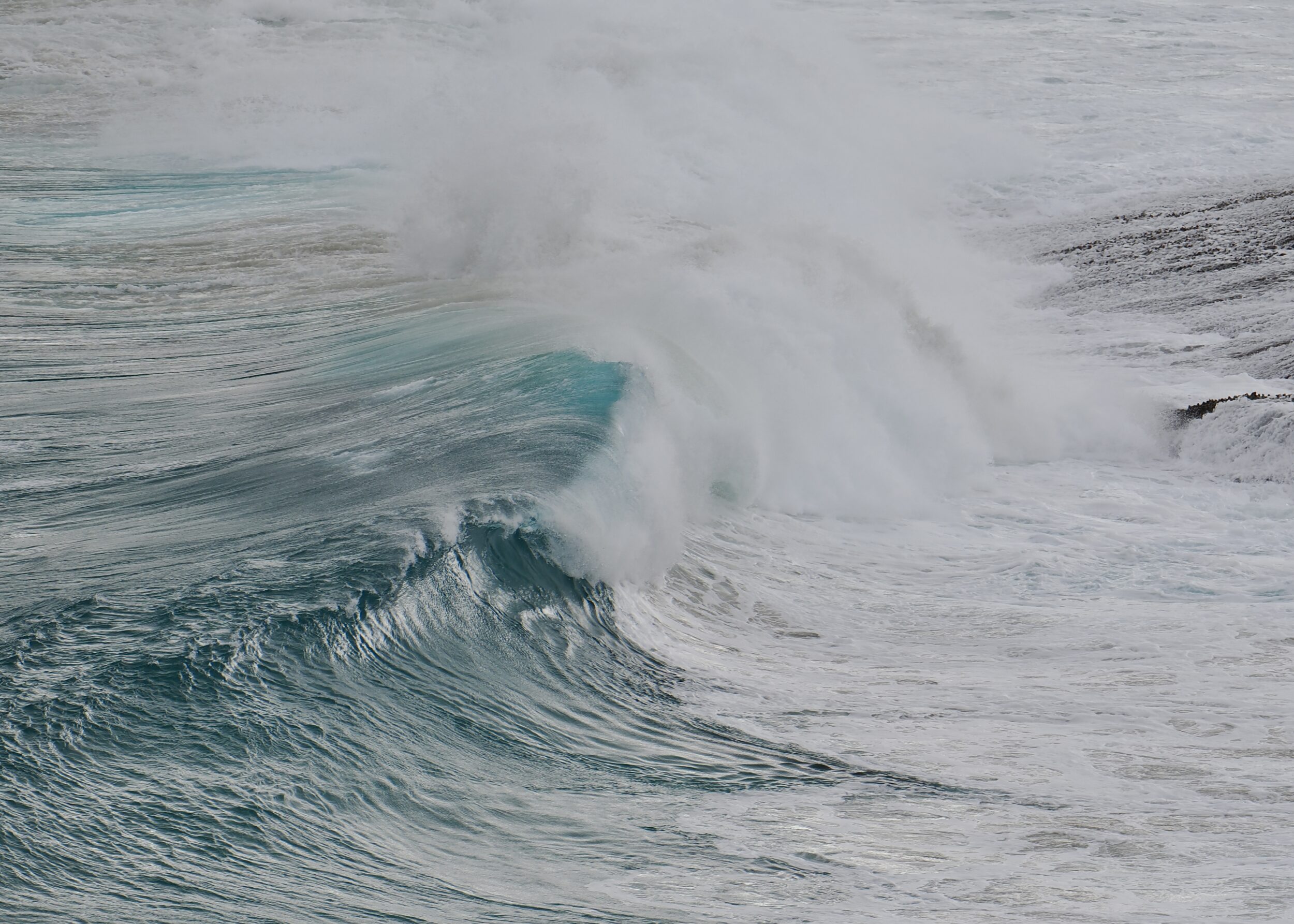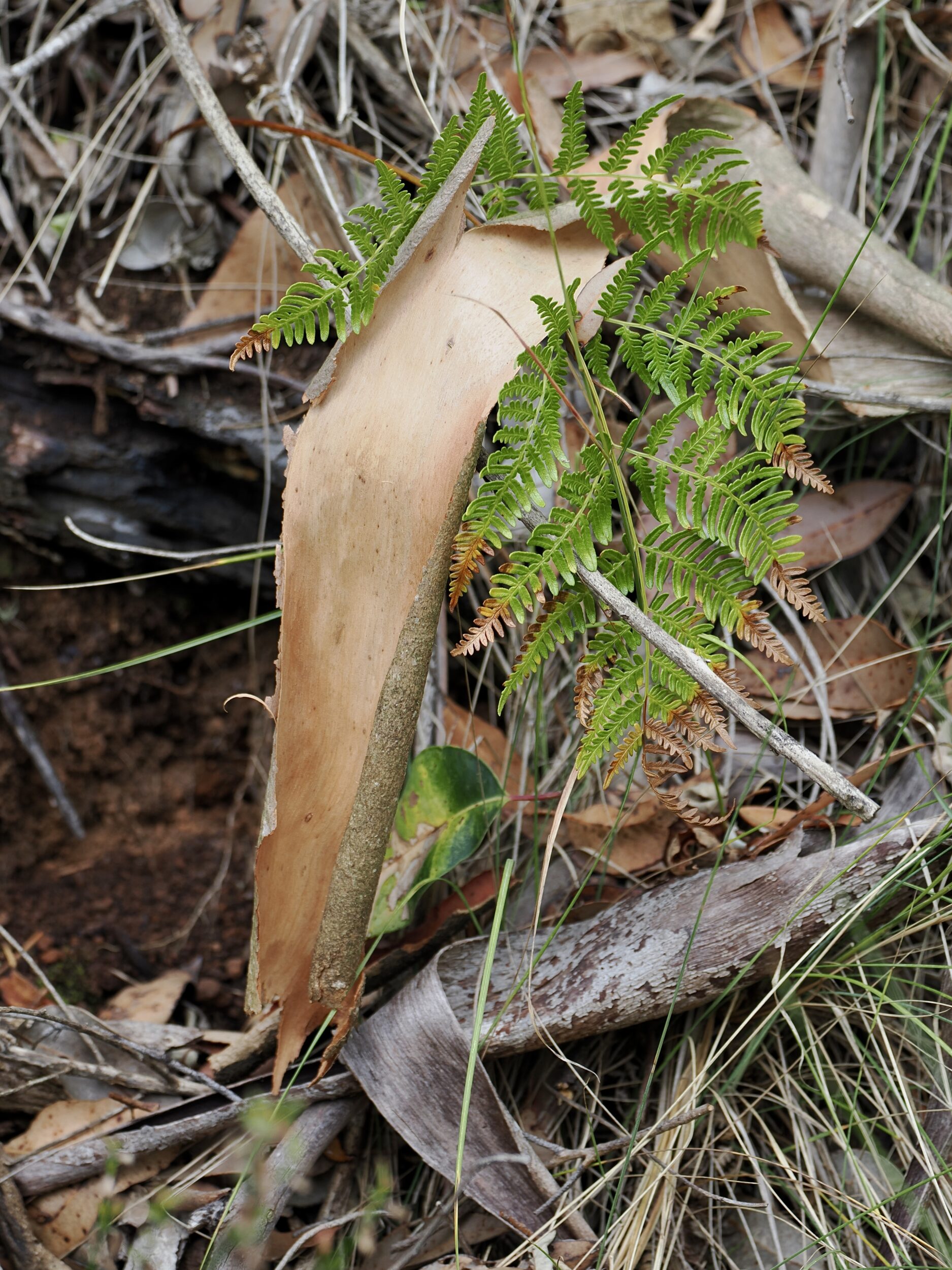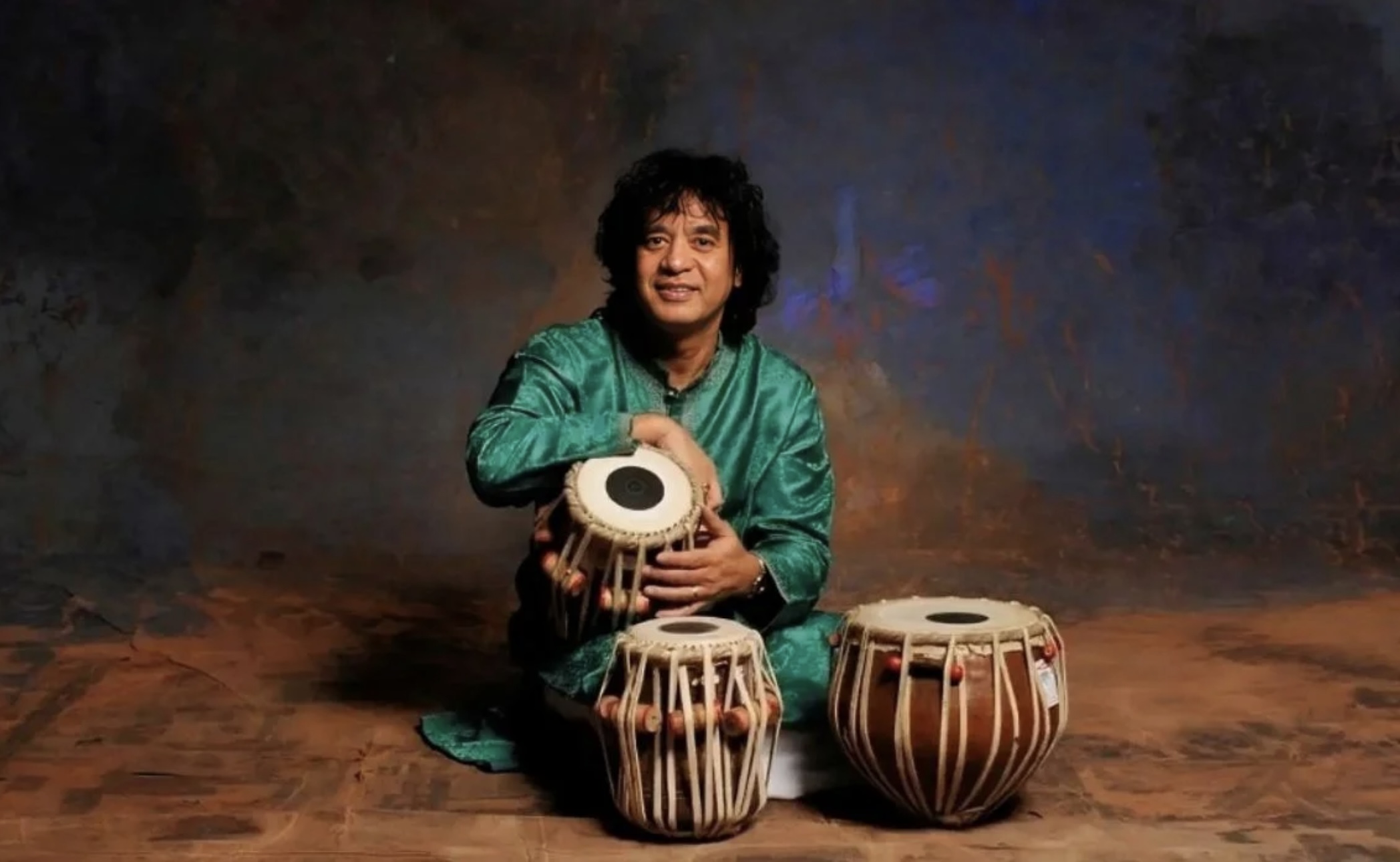This post’s photo was taken just a few minutes further into our morning walk on 18 March 2025.
When clouds move along in a dappled sky, they can swiftly and dramatically change a landscape’s/seascape’s appearance.
A few minutes earlier – as pictured in this series’ preceding chapter – the “darkly forbidding”, low-lying island in front of Hummocky/Mt Chappell Island was an “inviting” isle, bathed in golden light.
Matthew Flinders named Mount Chappell in 1798, after the maiden name of the woman he would marry in 1801.
Flinders Island, is named after him, as are more than 100 other Australian places; Flinders was the first person to map the entire Australian continent’s shoreline – mostly, with astonishing precision.
